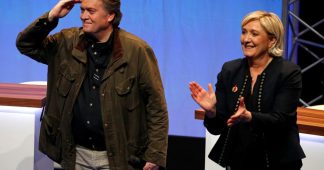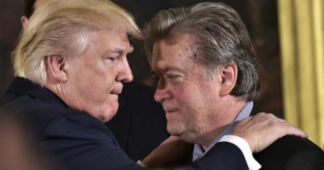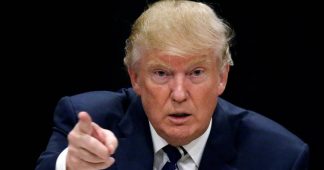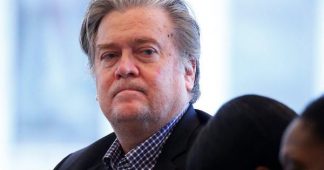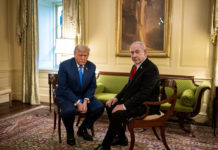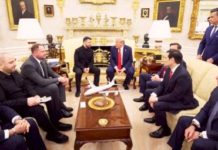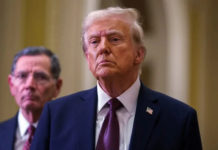By Giulietto Chiesa
The outcome of the Canadian G-7, with the two sensational moves by Donad Trump (re-opening the road to Putin and the early departure for Singapore) has made explicit what, until a few weeks before, was only a suspicion, namely that “America First “means that Europe has already taken second place in the ranking of world interests.
It is difficult to think that this is a transitional whim of the current American president, especially if we also take into account the duties on aluminum and steel and the unilateral decision to tear up the Iranian nuclear agreement against (without even consulting them) the opinion of all the Atlantic allies, as well as those of Russia and China. The general impression of this swirl of boxing shots is that of a great shock. Which could be even more substantial than what appears at first glance.
A few days ago a very interesting analysis by Natalie Nouayrède appeared in the Guardian, where several suggestive hypotheses were put forward, including one of strategic significance, which important American think tanks describe as “radicalizing Europe”. This coincided with the two European trips (one of which to Italy) of Steve Bannon, the former strategist of Trump in the winning election campaign, who was removed from the scene by neo-con pressures but, it would seem, not at all abandoned by the President.
Bannon did not come to Europe just to “take a look” – writes Nouayrède – but to spread advice to audiences in Prague, Budapest, Paris and Rome. What advice the newspapers have already revealed: the eulogy of the “national revolts” in progress, a generous support to Marine Le Pen, and, in Italy, the yellow-green government. But not much weight was given to the utterances of a what appears as a declining character.
This may be so. But events seem to say the opposite. There is fire under the smoke. Trump’s contemptuous attitude towards his allies speaks for itself.
And it produces seismic changes. Mind you, this is not about philosophies and strategies. The American President moves fast on the surface, with the zigzags of a smart “surfer”. Look at the upcoming mid-term elections; he covers his shoulders with the tricks that the deep state continues (and will continue) to prepare for him; play in advance with random allies (such as Netanyhau against Iran) regardless of the medium-term effects. He is an elephant in the glass house, he gladly breaks what comes under his feet, but only if he needs to deflect the internal blows.
Which does not exclude that there are others who think bigger, and who carry out the foundation work of a brand new international building, also in the name of “America First”, but with a completely new design. Steve Bannon, in this sense, could be the Trojan horse. In Prague he went as far as to describe the post-war liberal order as a “fetish”. What does this mean? That from Washington there are those who look with eyes not less attentive than satisfied to the current European political disintegration, with the idea that it can and should be facilitated, accelerated, exploited. To what end? For example, replacing the current NATO philosophy (a king with a cohort of liberal vassals bowed to his feet) with a true “transatlantic popular authoritarian Right”.
So much the better if this were to beat hard the only ally in a position to annoy America, namely Germany, all while preparing to negotiate and strike, if necessary, the remaining world giants, China and Russia. If that were the case it would be saying that the risk that the United States is running is really as big as Europe. A giant of nearly 500 million individuals who could organize to resist. They have the means, if only they had the time and the desire.
The fact is that this Europe, this Germany, this France, have not yet recovered from the shock that America is subjecting them to. They understand that the game is changing, but they oscillate between the idea that it is now the time to prepare their defenses, and the opposite idea that it is better to wait for the fireworks to end. In other words, many think of Trump as a meteor. It will pass, like all meteors, and then things will return to the old, good relations of subjection, which guaranteed the continuation of the old mutual benefits.
It’s too early to say which idea will eventually prevail at the top of the European elites. One wonders what’s in the minds of those who, in Europe today, try to interpret the mounting pressures from below? Are they leaning towards the end of the European Union or towards another European Union? The debate is sparked, for example, between those who think that, in this case, it is useful to use the American “subversive” drive to weaken Germany and actual Europe and those who think that a strong (and more just) Europe could be the tool to stop America (and these, paradoxically, don’t only include conservatives). The 2019 European elections are announced as a testing ground for all the different and contrasting strategies.
The fault lines are numerous. American NATO is enough to keep all horses at bay. It is obvious that Washington will hold onto the bridle, just as it lashes the whips. The only line of defense, for us, for our current government, would be to identify what is today the national interest of Italy and, once the objectives are set, go in search of allies. In Europe and beyond, knowing that they could change along the way. See the dangerous swing of Premier Conte in Canada: in a few hours he passed from an agreement with Trump (opening towards Russia) to yielding to the European recall (the sanctions will remain). Without clear objectives and a skillful management of the matches, one could end up becoming a vase of clay in the midst of steel vessels.
And while Conte was talking in Canada, Putin, the stone guest, was going to Beijing….
